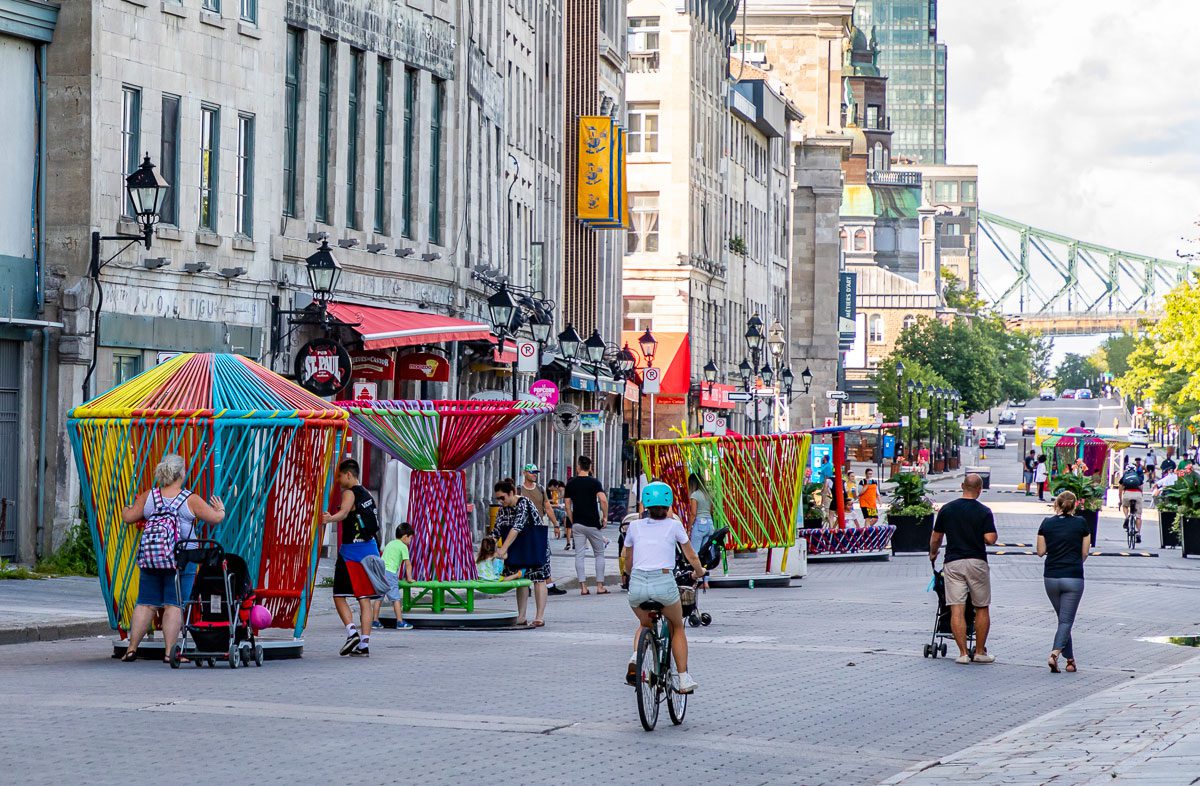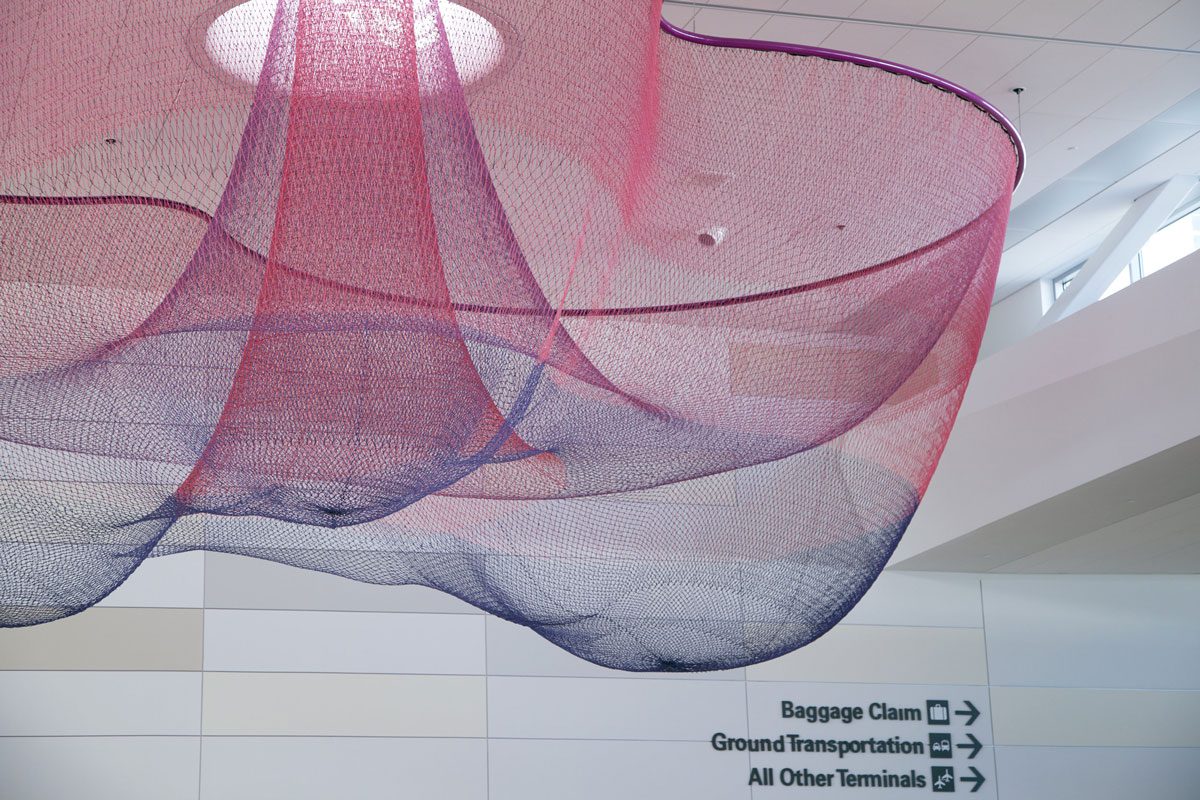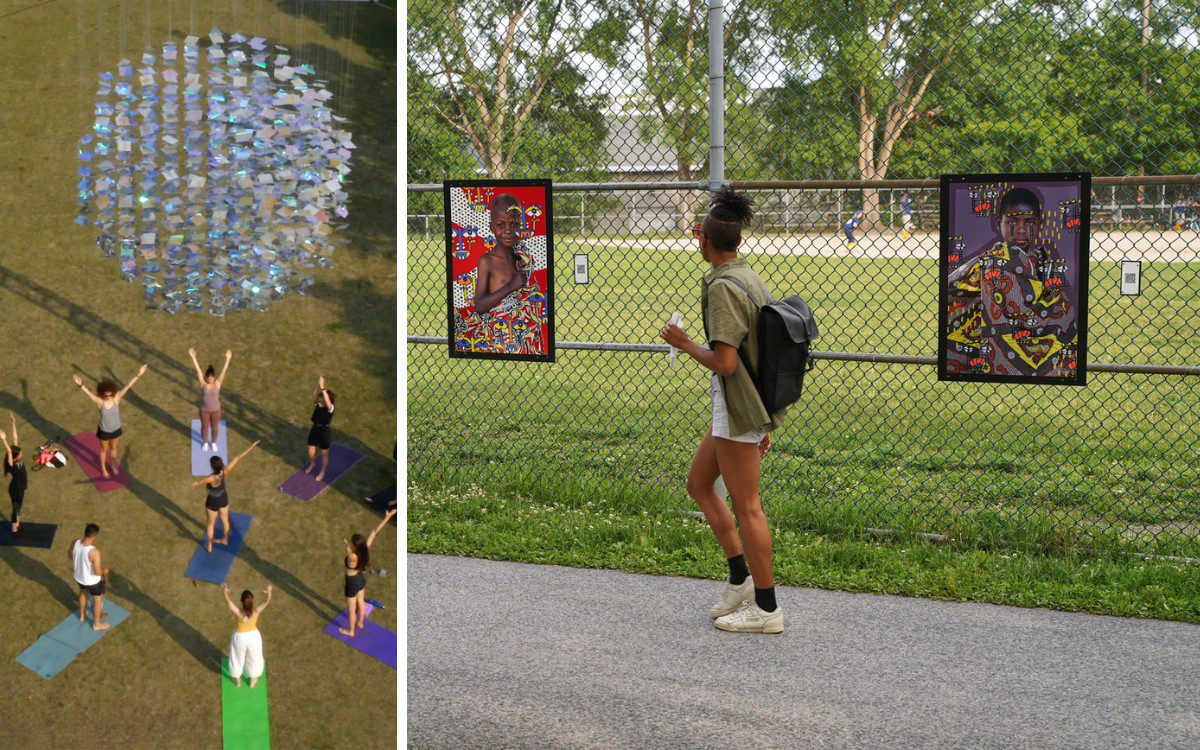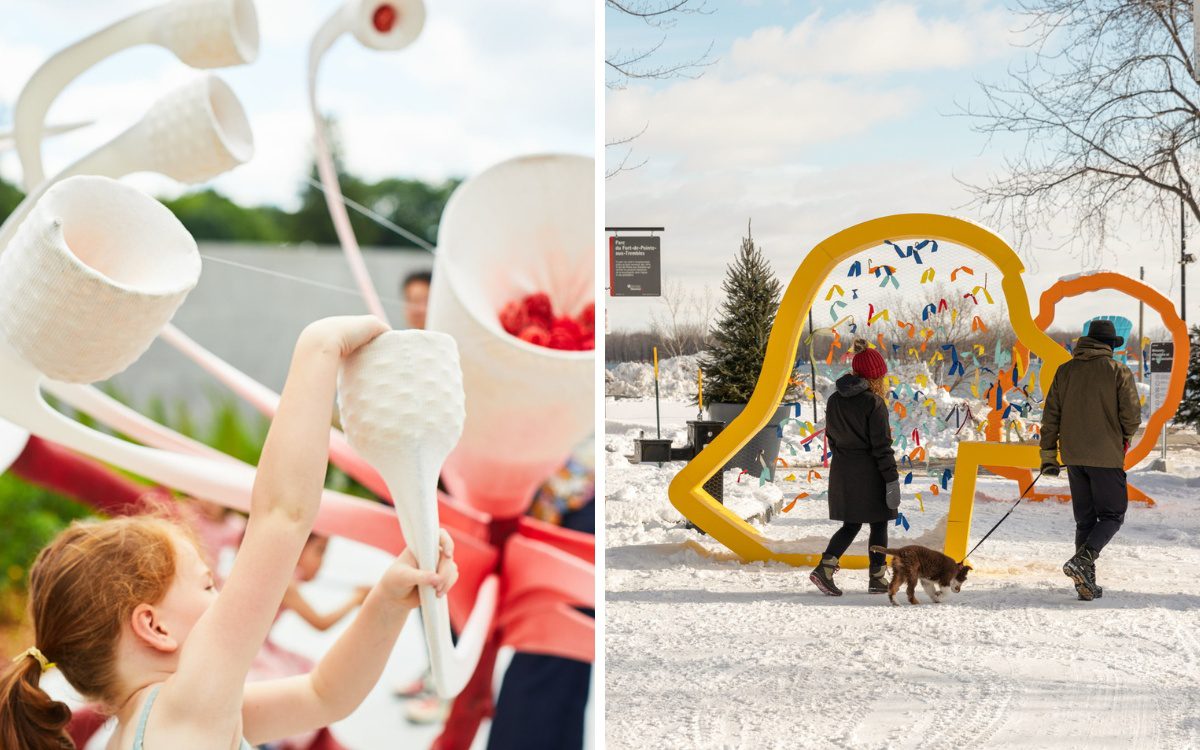In the evolving landscape of urban development and revitalization, creative placemaking lies at the core, aiming to create places for people. This approach goes beyond brick and mortar, as cities, real estate professionals, transit authorities, and Business Improvement Areas (BIAs) tackle multifaceted challenges, focusing on connecting people to the places they share.
Vacant properties, underutilized spaces, and economic stagnation lead to sterile environments lacking identity, detracting from public health and well-being. Creative placemaking imbues these spaces with unique identities, fostering community engagement and enhancing well-being.

One significant challenge in urban and real estate development today involves reimagining underutilized areas to become vibrant, inclusive and activated. It’s about creating and building spaces that maximize use and ensure relevance to the community’s needs.
This process requires developments to resonate deeply with the people they aim to serve, whether revitalizing pre-existing spaces or developing brand-new areas.
These spots have loads of potential to help cities grow, but they often end up neglected, messing with the overall impression of a property. This can make it difficult for community members to feel at home or proud of where they live or work.
Facilitating economic growth and prosperity is another tough nut to crack. Cities and leaders in real estate need to get creative to boost their economies, attract new businesses, and create more jobs while keeping things lively. But they also need to create spots where people can come together, stay healthy, and feel good.

Creative Placemaking transcends traditional settings such as plazas and extends to transit hubs. An effectively designed transportation system not only ensures accessibility to essentials like shops, jobs, and entertainment but also fosters community cohesion and narrows social divides.
This concept extends to various spaces, including airports, train, and subway stations. The design of the streetscape and transit facilities can be significantly enhanced through creative placemaking. It improves how people navigate their environment and the quality of spaces associated with transportation. Creative placemaking can also make transit hubs safer, more intuitive, and more engaging for everyone.
To tackle these hurdles, cities and real estate developers must rethink planning and building, creating spaces that support communities, encourage social interaction, engage people in unique ways, and showcase a property’s uniqueness while keeping the energy alive. Cities can transform into vibrant centres where everyone can thrive by creating places that centre well-being, joy, creativity, and a sense of belonging.

Creative placemaking refers to the collaborative process where community members, artists, and local stakeholders use the arts, creativity, and cultural expression to reimagine and enhance public spaces or privately owned publicly accessible spaces (POPS). Its key principles include prioritizing community-led initiatives, leveraging the creative elements and the arts for public space enhancement and economic development, and promoting collaboration and co-creation among various groups.
Creative placemaking aims to cultivate a sense of place that resonates with the community, reflecting local character and strengthening social connectedness within the community. Whether it’s transforming a plaza into a bustling market space or reintroducing historical narratives into modern transit hubs, creative placemaking enhances more than just the aesthetics of a place and can help improve the emotional and functional value of different spaces across a city.
While not a typical cost/benefit financial analysis, creative placemaking’s return on investment (ROI) is measured through society impact metrics, increased property values, improved public perception, happiness and wellness indicators, positive behavioural changes, and much more. By integrating creativity into the design of spaces, cities can unlock potent economic, social, and cultural benefits that translate into tangible gains for all partners. Learn more through our study on the positive ROI of placemaking.
Creative Placemaking Increases Positive ROI, study from Toronto Metropolitan University and Industry leaders finds from massivart on Vimeo.
Temporary activations in public spaces serve a variety of purposes, from sparking immediate interest to testing the potential for more permanent transformations. These can take the form of pop-up art shows, seasonal community events, or temporary areas for pedestrians to enjoy. By initiating these projects, communities can generate buzz, encourage social interaction, and lay the groundwork for more substantial future developments. Temporary activations not only demonstrate a space’s potential but also act as trial runs for proving the necessity of longer-term solutions.
Such projects aim for both immediate impact and the exploration of lasting changes. They might include strategies to increase pedestrian traffic, introduce green spaces for public health, or infuse areas with art to uplift the surroundings. While these endeavours may require more resources and time, their lasting benefits to the community make them a worthwhile investment.
Temporary activations have seen remarkable and varied examples around the globe, each harnessing the unique character of their location to achieve meaningful engagement and transformation. For instance, the Toronto Waterfront’s Public Life Pilot project transformed an underutilized space into a vibrant place.

Long-term projects in creative placemaking are strategic interventions that aim to catalyze lasting change and transformation within communities. Unlike temporary projects, which provide short-term solutions, long-term projects require a holistic approach, addressing various aspects of placemaking, including physical, social, economic, and cultural dimensions. These projects often entail the redevelopment or revitalization of neighbourhoods, districts, or public spaces, with an emphasis on creating inclusive, equitable, and resilient communities.
By empowering residents and fostering community engagement, these holistic projects create a sense of ownership and pride. They stimulate economic activity, attract investment, and support local businesses, contributing to vibrant, inclusive neighbourhoods. Through public art, cultural programming, and inclusive design, long-term projects promote social interaction, celebrate diversity, and preserve cultural heritage, enriching the fabric of urban life and fostering a sense of belonging for all residents.
An example that is emblematic of a long-term project is the creative placemaking work happening on the Downsview Airport Lands in Toronto with Northcrest Developments. What was once an unused airport has been transformed and continues to be transformed into a bustling cultural and social hub.

Creative placemaking is not merely an urban design or art project; it’s a forward-thinking approach to creating more people-centred places that foster community pride and a sense of belonging, encourages social interaction, energize economies, and reimagine urban spaces so that they are places where people love to live, work, and play.
Cities can yield remarkable transformations by adopting a holistic approach to redevelopment. Guided by experienced leaders in creative placemaking like MASSIVart, urban development, cities, real estate professionals, transit authorities, Business Improvement Areas (BIAs), and community stakeholders can create spaces that are physically enhanced and injected with life and cultural vibrancy.
This union of practicality and creativity, led by creative placemaking experts rather than just average art consultants, paves the way for thriving and resilient communities.
| Learn more about our services |
| Cookie | Duration | Description |
|---|---|---|
| cookielawinfo-checkbox-analytics | 11 months | This cookie is set by GDPR Cookie Consent plugin. The cookie is used to store the user consent for the cookies in the category "Analytics". |
| cookielawinfo-checkbox-functional | 11 months | The cookie is set by GDPR cookie consent to record the user consent for the cookies in the category "Functional". |
| cookielawinfo-checkbox-necessary | 11 months | This cookie is set by GDPR Cookie Consent plugin. The cookies is used to store the user consent for the cookies in the category "Necessary". |
| cookielawinfo-checkbox-others | 11 months | This cookie is set by GDPR Cookie Consent plugin. The cookie is used to store the user consent for the cookies in the category "Other. |
| cookielawinfo-checkbox-performance | 11 months | This cookie is set by GDPR Cookie Consent plugin. The cookie is used to store the user consent for the cookies in the category "Performance". |
| viewed_cookie_policy | 11 months | The cookie is set by the GDPR Cookie Consent plugin and is used to store whether or not user has consented to the use of cookies. It does not store any personal data. |